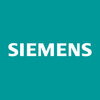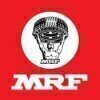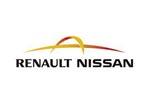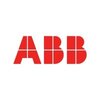Maintenance Engineer
700+ Maintenance Engineer Interview Questions and Answers

Asked in Sun Vacuum Formers

Q. What is an injection molding machine?
An injection molding machine is a manufacturing tool used to produce plastic parts by injecting molten material into a mold.
It consists of a hopper, an injection unit, a clamping unit, and a control unit.
The hopper is used to store the plastic material that will be melted and injected into the mold.
The injection unit melts the plastic and injects it into the mold.
The clamping unit holds the mold in place during the injection process.
The control unit manages the entire process...read more

Asked in RSPL Group

Q. Any knowledge of Conveyor belts, Grinding mill , kiln, feedmixer.
Yes, I have knowledge of conveyor belts, grinding mills, kilns, and feed mixers.
I have experience in maintaining and repairing conveyor belts, including belt splicing and replacement.
I am familiar with the operation and maintenance of grinding mills, including lubrication and alignment.
I have worked with kilns, including troubleshooting and repairing issues with burners and refractory materials.
I have experience maintaining and repairing feed mixers, including augers and moto...read more
Asked in GPZ ENGINEERS

Q. Do you have experience in programming, operating, and maintenance departments?
Yes, I have experience in programming and operating as well as maintenance department.
I have experience in programming languages such as Java and Python.
I have operated and maintained various types of machinery and equipment.
I have also developed and implemented maintenance schedules and procedures.
For example, I have programmed and operated a CNC machine and maintained it regularly to ensure optimal performance.
I have also developed a maintenance schedule for a production li...read more
Asked in Hindustan Electrode Graphite

Q. Hartman working principle & its integrated parts. Types of Maintenance. Eot cranes working. Oil types, Work planing & execution etc.
The interview question covers Hartman working principle, types of maintenance, EOT cranes working, oil types, work planning, and execution.
Hartman working principle involves the use of a magnetic field to detect metal objects in a conveyor belt.
Types of maintenance include corrective, preventive, predictive, and condition-based maintenance.
EOT cranes work by using a trolley and hoist to move heavy loads horizontally and vertically.
Oil types used in maintenance include hydraul...read more

Asked in Aastrid Life Sciences

Q. How do you determine the appropriate wire size based on the current?
The size of wire is decided based on the current carrying capacity and the distance it needs to travel.
Calculate the maximum current that will flow through the wire
Determine the distance the wire needs to travel
Refer to a wire gauge chart to find the appropriate wire size
Consider the type of insulation needed for the wire
Example: For a 20A current and a distance of 50ft, a 12-gauge wire with appropriate insulation would be needed

Asked in VE Commercial Vehicles

Q. How paint both balancing happens ,how temp maintaned
Balancing in paint mixing is achieved by adjusting the proportions of different colors. Temperature is maintained using heating or cooling systems.
Balancing in paint mixing is achieved by adjusting the proportions of different colors to create the desired shade.
Temperature maintenance can be done using heating or cooling systems to keep the paint at the optimal temperature for application.
Regular monitoring of the temperature and viscosity of the paint is essential to ensure ...read more
Maintenance Engineer Jobs




Asked in VE Commercial Vehicles

Q. PTED process how it happens, what are the chemicals
PTED process involves the use of chemicals to remove contaminants from wastewater.
PTED stands for Physical-Chemical Treatment with Electrochemical Disinfection.
The process involves the use of chemicals such as chlorine, ozone, or hydrogen peroxide to remove contaminants from wastewater.
Electrochemical disinfection is used to kill bacteria and other pathogens in the treated water.
The chemicals used in PTED process help in breaking down organic matter and neutralizing harmful s...read more

Asked in MRF Tyres

Q. What are different types of valves
Valves are devices used to control the flow of fluids or gases. There are several types of valves used in different applications.
Gate valve
Ball valve
Butterfly valve
Globe valve
Check valve
Diaphragm valve
Needle valve
Pressure relief valve
Safety valve
Share interview questions and help millions of jobseekers 🌟


Asked in MRF Tyres

Q. What are the different types of threads?
Threads are helical ridges or grooves on the surface of a cylindrical object. There are different types of threads.
Unified Thread Standard (UTS)
Metric Thread Standard
Pipe Thread Standard
ACME Thread
Buttress Thread
Knuckle Thread
Square Thread
Round Thread

Asked in Rexnord

Q. What is your plan of action to address the issue?
The plan of action would involve identifying the issue, assessing its severity, determining the root cause, and implementing a solution.
Identify the issue through observation and analysis
Assess the severity of the issue to determine the urgency of the solution
Determine the root cause of the issue to prevent it from recurring
Implement a solution that addresses the root cause and resolves the issue
Monitor the solution to ensure its effectiveness and make adjustments as necessar...read more

Asked in Renault-Nissan

Q. What is the process for identifying a step sensor error?
The process for identifying a step sensor error involves checking for physical damage, calibrating the sensor, and testing its functionality.
Inspect the step sensor for any physical damage or wear and tear.
Calibrate the sensor according to manufacturer's instructions.
Test the sensor by taking a known number of steps and comparing the reading to the actual count.
Check the wiring and connections for any issues that may be causing the error.

Asked in Trident Group

Q. How many types of maintenance are there?
There are generally 4 types of maintenance: corrective, preventive, predictive, and condition-based.
Corrective maintenance involves fixing a problem after it has occurred.
Preventive maintenance involves scheduled maintenance to prevent problems from occurring.
Predictive maintenance involves using data and analytics to predict when maintenance is needed.
Condition-based maintenance involves monitoring equipment and performing maintenance when certain conditions are met.
Examples...read more

Asked in Kiswok Industries

Q. What factors should be considered when purchasing a rope for an EOT crane?
Key considerations for purchasing EOT crane ropes include material, load capacity, safety standards, and maintenance requirements.
Material: Choose between steel wire ropes or synthetic ropes based on application; steel is durable, while synthetic is lightweight.
Load Capacity: Ensure the rope can handle the maximum load of the crane; for example, a 10-ton crane requires a rope rated for at least 10 tons.
Safety Standards: Verify compliance with industry standards like ISO or AS...read more

Asked in Tata Steel

Q. Utility Operation and Mechanical Maintenance of machine shops
Utility operation and mechanical maintenance are crucial for efficient machine shop operations.
Utility operation involves managing power, water, and air supply to the machines.
Mechanical maintenance includes regular inspections, cleaning, and repairs of the machines.
Proper lubrication and alignment of machine parts are also important for smooth operations.
Examples of machines in a machine shop include lathes, milling machines, and grinders.

Asked in Ask Automotive

Q. What is the source used for the B-axis clamp in a Mazak HMC?
The B axis clamp in Mazak HMC typically uses hydraulic or pneumatic systems for secure positioning.
Hydraulic systems provide strong clamping force, ensuring stability during machining.
Pneumatic systems offer quick actuation and release, enhancing productivity.
Mazak HMCs often integrate sensors to monitor clamp status for safety.
Examples include the Mazak VARIAXIS series, which utilizes advanced clamping mechanisms.
Asked in SoluM India Hightech

Q. What is your current CTC, and what is your expected salary increase?
My current CTC is $60,000 and I am looking for a 10% increment.
My current CTC is $60,000
I am seeking a 10% increment
This would bring my desired CTC to $66,000

Asked in Jaya Hind Industries

Q. What was the system pressure of the HPDC machine?
The system pressure of a High-Pressure Die Casting (HPDC) machine typically ranges from 700 to 1500 bar.
HPDC machines operate at high pressures to ensure molten metal fills the mold quickly.
Common pressures for aluminum die casting are around 700-900 bar.
For magnesium die casting, pressures can reach up to 1500 bar.
Maintaining optimal pressure is crucial for minimizing defects in castings.

Asked in UltraTech Cement

Q. Why is earthing needed in electrical equipment and machinery?
Earthing ensures safety by preventing electric shock and equipment damage through proper grounding of electrical systems.
Prevents electric shock: Earthing provides a safe path for fault currents, reducing the risk of electric shock to users.
Protects equipment: Grounding helps to divert excess voltage during surges, protecting sensitive machinery from damage.
Stabilizes voltage levels: Earthing maintains consistent voltage levels in electrical systems, enhancing performance and...read more

Asked in Suzlon Group

Q. Tell me about your experience with maintenance.
Maintenance is the process of ensuring the proper functioning and longevity of equipment, machinery, or infrastructure.
Maintenance involves regular inspections, repairs, and replacements to prevent breakdowns and extend the lifespan of assets.
It includes tasks such as lubrication, cleaning, calibration, and troubleshooting.
Preventive maintenance aims to identify and address potential issues before they cause major problems.
Corrective maintenance focuses on fixing equipment af...read more

Asked in Bebitz

Q. What is a valve, and where are valves used?
A valve is a device that regulates, directs or controls the flow of a fluid by opening, closing, or partially obstructing various passageways.
Valves are used in various industries such as oil and gas, water treatment, chemical processing, and power generation.
They can be used to control the flow of liquids, gases, and even slurries.
Valves can be manual or automated, and can be operated by hand, electric motors, or pneumatic actuators.
Examples of valves include ball valves, ga...read more

Asked in Reach International

Q. What is pascals law and where its implementation
Pascal's law states that pressure applied to a fluid in a closed container is transmitted equally in all directions.
Pascal's law is used in hydraulic systems to transmit force and motion.
It is also used in braking systems of vehicles.
The law is applicable in medical devices like blood pressure monitors and ventilators.
Pascal's principle is used in the operation of hydraulic presses and lifts.
The law is named after Blaise Pascal, a French mathematician and physicist.

Asked in Godrej Industries Group

Q. What is the difference between MIG and TIG welding?
MIG welding uses a continuously feeding wire electrode, while TIG welding uses a tungsten electrode to produce the weld.
MIG welding is faster and easier to learn than TIG welding
TIG welding produces higher quality and more precise welds than MIG welding
MIG welding is better for thicker materials, while TIG welding is better for thinner materials
MIG welding produces more spatter and requires more cleanup than TIG welding
TIG welding is more expensive due to the need for a separ...read more

Asked in Aia Engineering

Q. What are the different types of cylinders?
Different types of cylinders include single-acting, double-acting, telescopic, and impact cylinders.
Single-acting cylinders: Operate in one direction using fluid pressure to extend or retract the piston.
Double-acting cylinders: Use fluid pressure to extend and retract the piston in both directions.
Telescopic cylinders: Consist of multiple nested stages that allow for a longer stroke length in a compact design.
Impact cylinders: Designed to deliver a high force in a short amoun...read more

Asked in Aia Engineering

Q. What are the different types of heat exchangers?
Heat exchangers are devices used to transfer heat between two or more fluids, without mixing them together.
Shell and tube heat exchanger
Plate heat exchanger
Double pipe heat exchanger
Finned tube heat exchanger
Spiral heat exchanger

Asked in Lars Medicare

Q. What are the maintenance procedures for a compressor chiller machine?
Regular maintenance of compressor chiller machines ensures efficiency, longevity, and reliability in cooling operations.
Inspect and clean air filters monthly to ensure proper airflow.
Check refrigerant levels and recharge if necessary to maintain efficiency.
Examine electrical connections and tighten loose wires to prevent failures.
Lubricate moving parts, such as bearings and motors, to reduce wear.
Test safety controls and alarms to ensure they function correctly.
Inspect and cl...read more

Asked in Lars Medicare

Q. What are the maintenance procedures for injection molding machines?
Regular maintenance ensures optimal performance and longevity of injection molding machines.
Daily checks: Inspect hydraulic fluid levels and check for leaks.
Weekly maintenance: Clean filters and check electrical connections.
Monthly inspections: Lubricate moving parts and check alignment of molds.
Quarterly servicing: Replace worn components and perform calibration.
Annual overhauls: Conduct a thorough inspection and replace any aging parts.

Asked in USHA International

Q. What does CFM mean in relation to compressors?
CFM stands for Cubic Feet per Minute and is a measurement of the volume of air that a compressor can deliver.
CFM is a common measurement used to rate the airflow of compressors.
It indicates how much air the compressor can deliver in one minute.
CFM is important in determining the efficiency and capacity of a compressor.
For example, a compressor with a CFM rating of 10 can deliver 10 cubic feet of air per minute.

Asked in Belmaks

Q. What are hydraulic systems and circuits?
Hydraulic system is a technology that uses liquid to transmit power and circuits are the pathways through which the liquid flows.
Hydraulic systems use a liquid, usually oil, to transmit power.
The liquid is pressurized and flows through a series of tubes and hoses.
Circuits are the pathways through which the liquid flows.
There are two types of circuits: open and closed.
Open circuits allow the fluid to flow back to the reservoir, while closed circuits keep the fluid in a continu...read more

Asked in MagicBricks

Q. What are your weaknesses?
I tend to be too detail-oriented, which can sometimes slow down my work.
I have a tendency to focus on small details and may need to remind myself to step back and look at the bigger picture
I am working on improving my time management skills to ensure that I am able to complete tasks efficiently
I am open to constructive feedback and am always looking for ways to improve my weaknesses

Asked in ABB

Q. What is panel preventive maintenance?
Panel preventive maintenance is the regular inspection and servicing of electrical panels to ensure their proper functioning.
It involves checking for loose connections, damaged components, and signs of wear and tear.
Cleaning the panels and removing any debris or dust that may have accumulated.
Testing the panels to ensure they are functioning properly and addressing any issues that are found.
Examples include checking the circuit breakers, fuses, and wiring in the panel.
Regular...read more
Interview Questions of Similar Designations
Interview Experiences of Popular Companies





Top Interview Questions for Maintenance Engineer Related Skills



Reviews
Interviews
Salaries
Users

















